Trichoplusia ni
(Hübner, [1803])
-
 Subfamily: Plusiinae, Argyrogrammatini
Subfamily: Plusiinae, Argyrogrammatini -
 Wingspan: 29-40 mm
Wingspan: 29-40 mm -
 Flight period: May - Oct
Flight period: May - Oct -
 Spread: Common
Spread: Common -
 Host plants: Polyphagous
Host plants: Polyphagous
Information
TThe Trichoplusia ni also called Ni Moth is a moth of the Noctuidae family, subfamily Plusiinae,
with wingspan of 29-40 mm.
In Europe it is quite widespread, it is absent from Iceland, Lithuania Latvia, and northern European Russia even if it is more frequent in southern Europe. *
It is also present in North America, North East Africa and the Indo - Australian region. Its migratory behavior and the wide range of host plants contribute to its wide distribution.
In Italy it is also present in the islands. *
The second part of the binomial is due to the similarity of the front wing marking with the Greek lowercase letter "Ni" (ν) .
The front wings of the Trichoplusia ni are of a brownish gray color with some olive shades and some black scales.
There are black, double lines filled with bright flakes.
The inner lines form two small little curves between the median vein and vein 1, with some bright scales before it; the outer lines are irregular, almost straight,
followed by a light gray band.
A straight line is visible before Termen followed by a double lunular line.
The fringe is checkered brown and gray, with basic dark moons beyond a white line.
The bright white stigma in the shape of "Ni" (ν) is clearly visible, surmounted, sometimes joined, by an orbicular spot of the same color.
The hind wings are opaque brown with veins and a large smoky blackish terminal edge, the fringe is white.
Head, thorax and abdomen are the background color of the front wings, the abdomen has a strong hair. **
The Trichoplusia ni has two generations a year the first goes from May to July the second from August to October. ***
The adult of the species is purely nocturnal and attracted by artificial light. Trichoplusia ni colonizes dry warm environments of all kinds, it has been found
on the rocky slopes in the mountains as well as in sandy soils in the coastal area.
A particularity of Trichoplusia ni is given by the fact that it is also used as an expression system in the field of molecular biology.
Some cells (High Five) of Trichoplusia ni are one of the most commonly used cell lines in eukaryotic protein expression ****
and they are highly efficient at producing influenza vaccines ****, *****.
This species has also developed resistance to the insecticidal proteins Bacillus thuringiensis.
The eggs are flattened spherical, white / yellowish, knurled.
The larva is up to 38 mm long, the pale green body with a slight longitudinal stripe on each side with a dark shade on the upper side, and a green head. **
As for the other Plusiinae , the first two pseudo-legs are absent, for this reason they move arching.
The pupa is greenish in color with black areas that can sometimes cover it entirely and is located inside a silky cocoon. **
The larvae are polyphagous and feed on Asteraceae, Brassicaceae, Solanaceae, Urticaceae and many others.
* Lepidoptera mundi https://lepidoptera.eu/ - Fauna Europea https://fauna-eu.org/
** Bestimmungshilfe für die in Europa nachgewiesenen Schmetterlingsarten - http://lepiforum.de/
*** Roland Robineau, Guide de papillons nocturne de France, Delachaux et Niestlé, 2011 p. 107
**** https://it.wikipedia.org/wiki/Sintesi_proteica#Sintesi_proteica_negli_eucarioti.
***** Trichoplusia ni cells (High Five) are highly efficient for the production of influenza A virus-like particles: a comparison
of two insect cell lines as production platforms for influenza vaccines - https://www.ncbi.nlm.nih.gov/pubmed/20300881


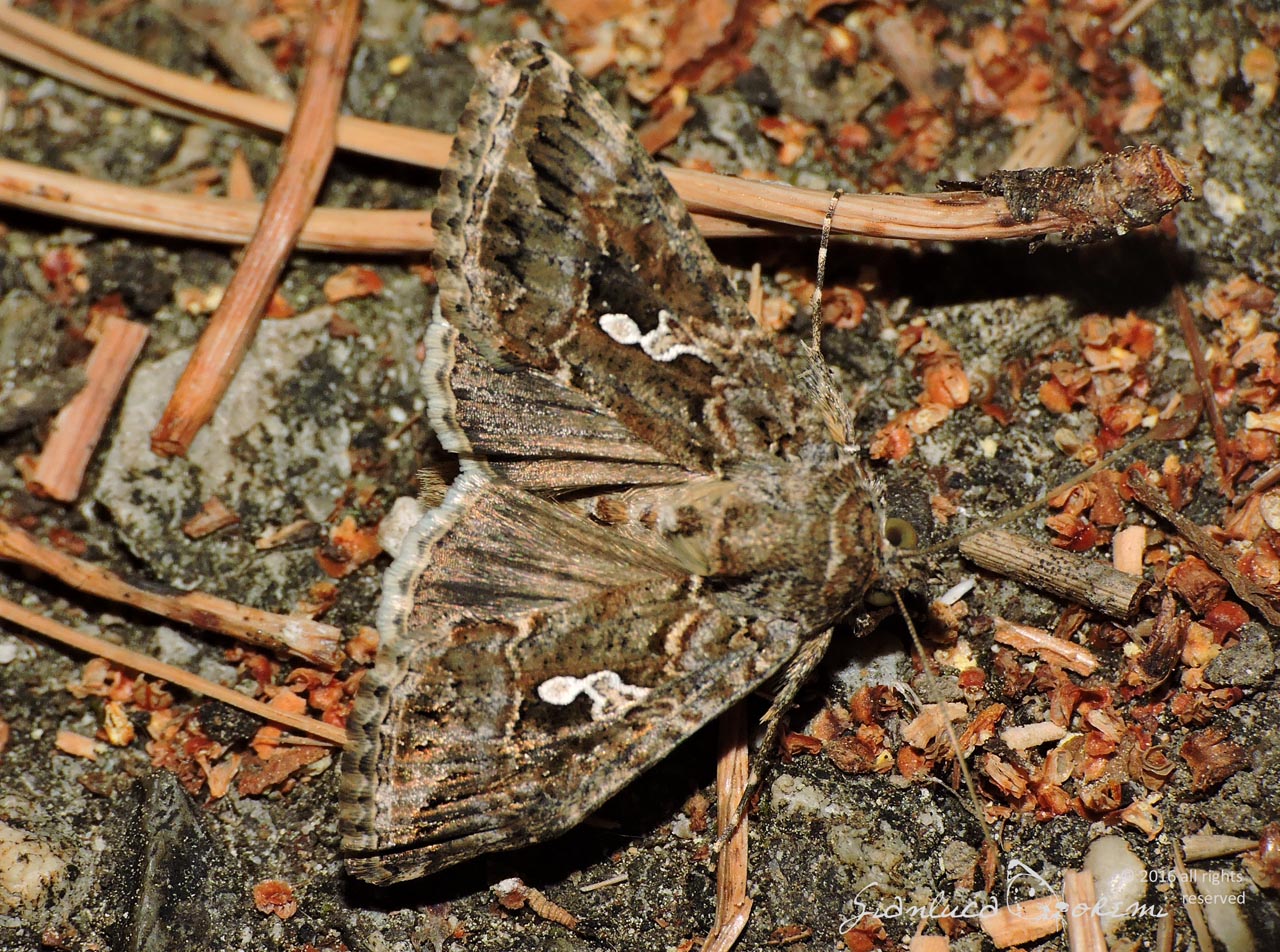
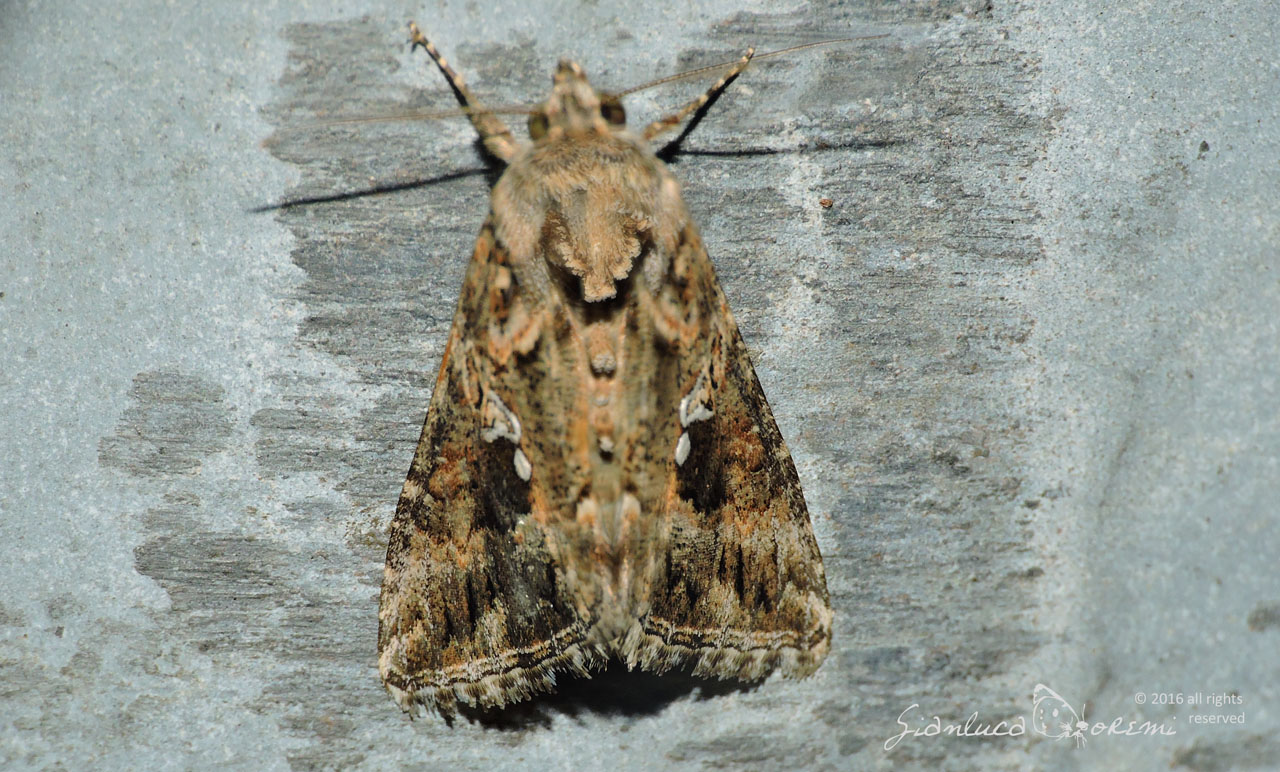

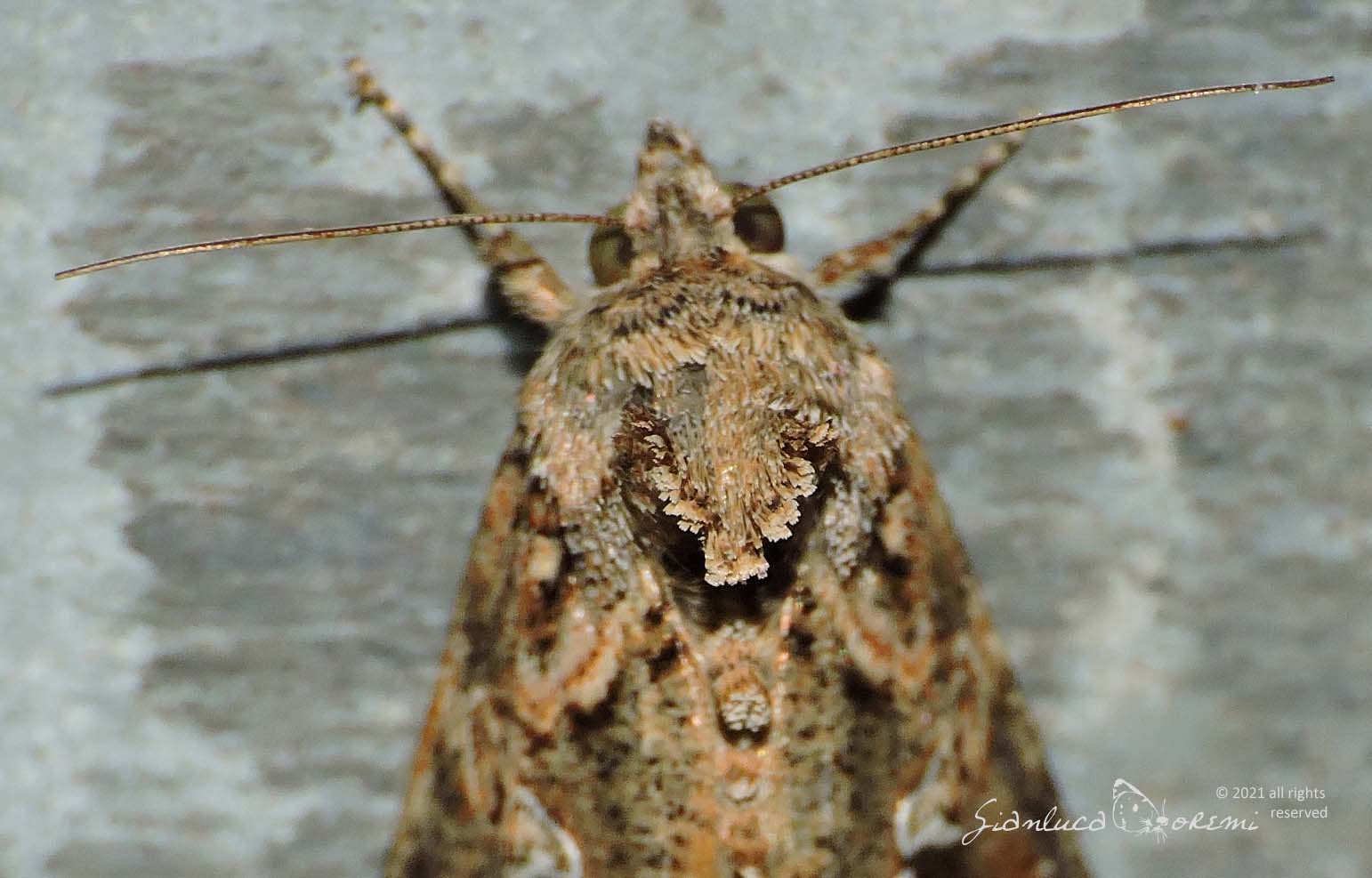
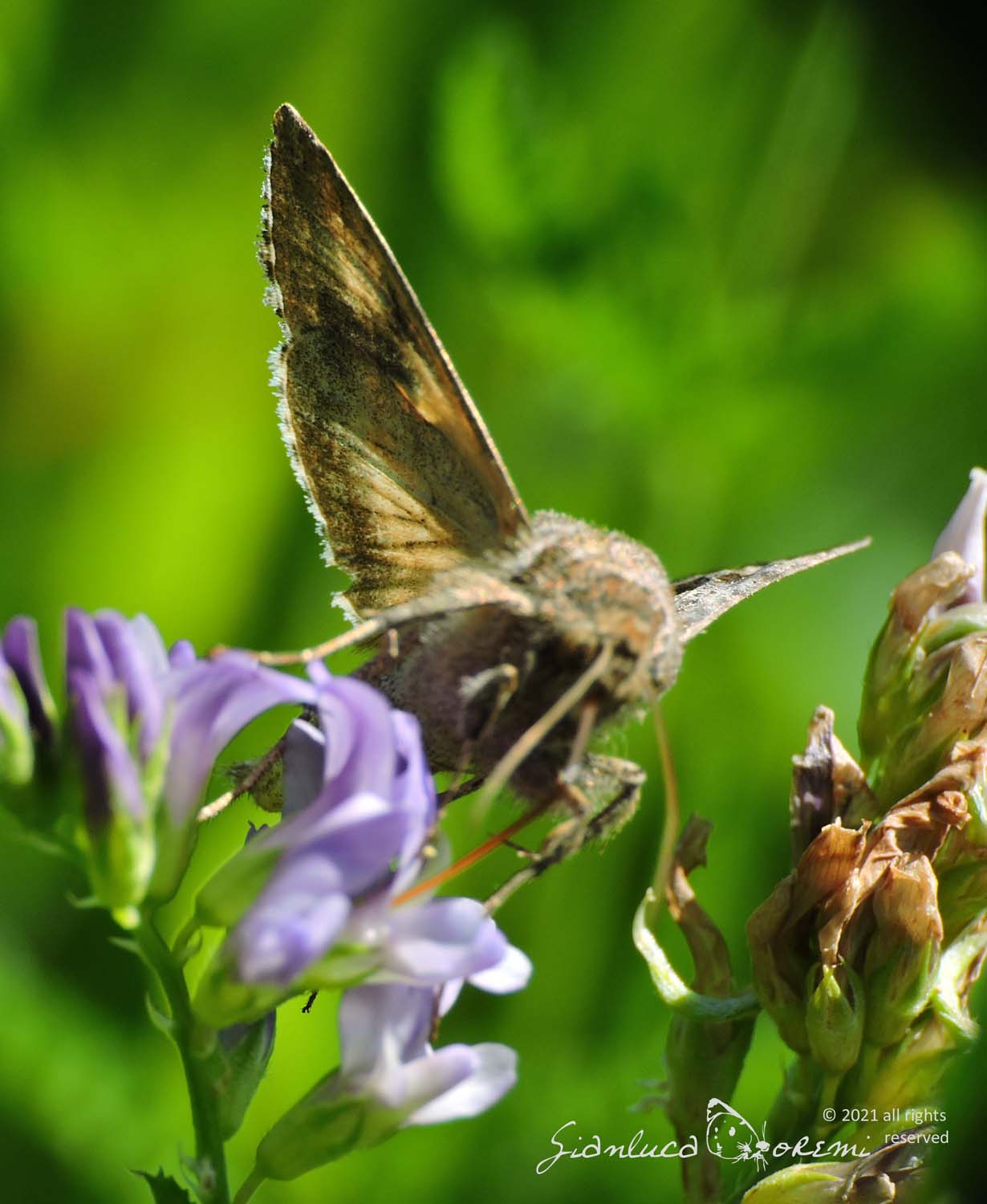
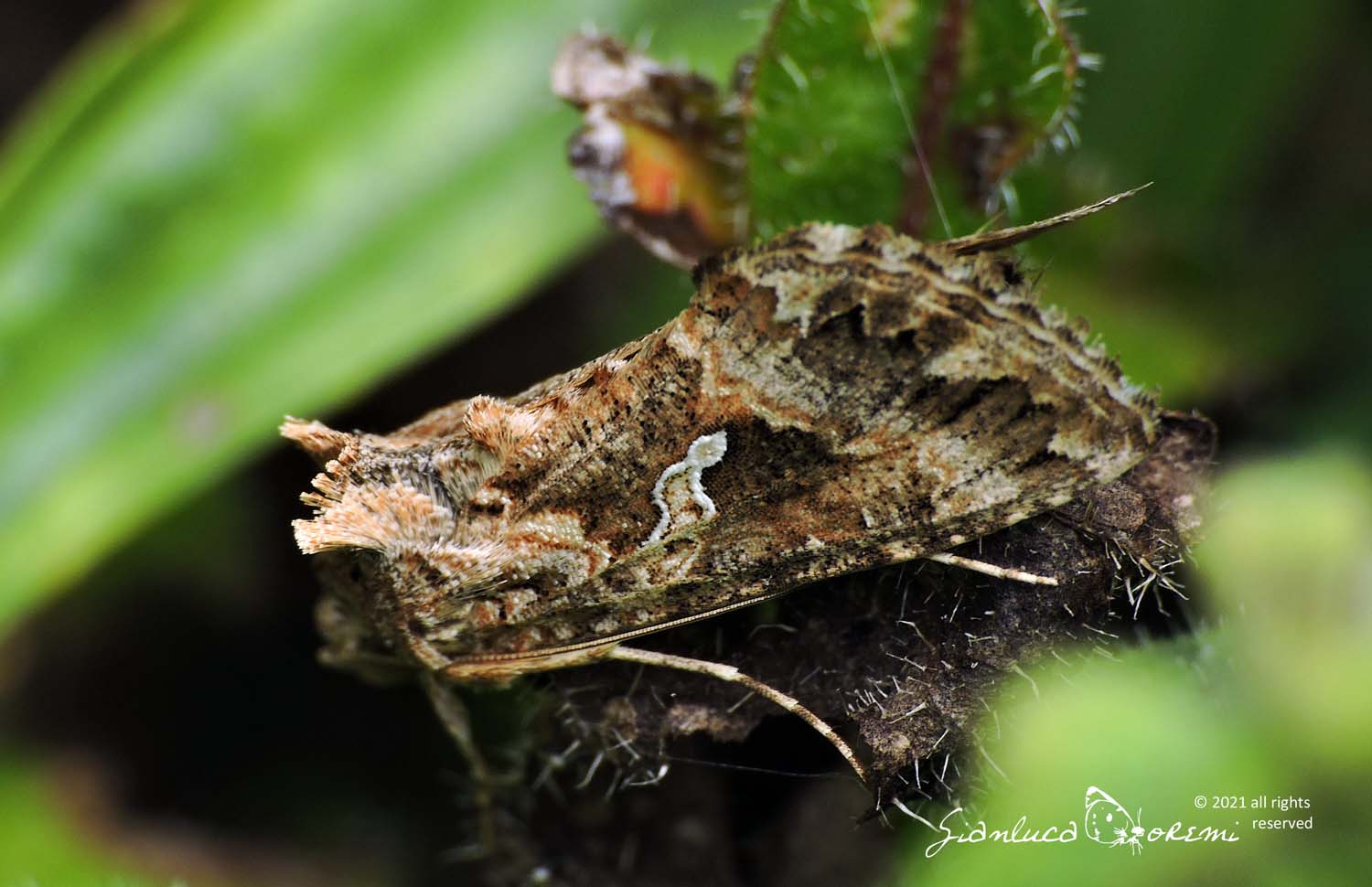
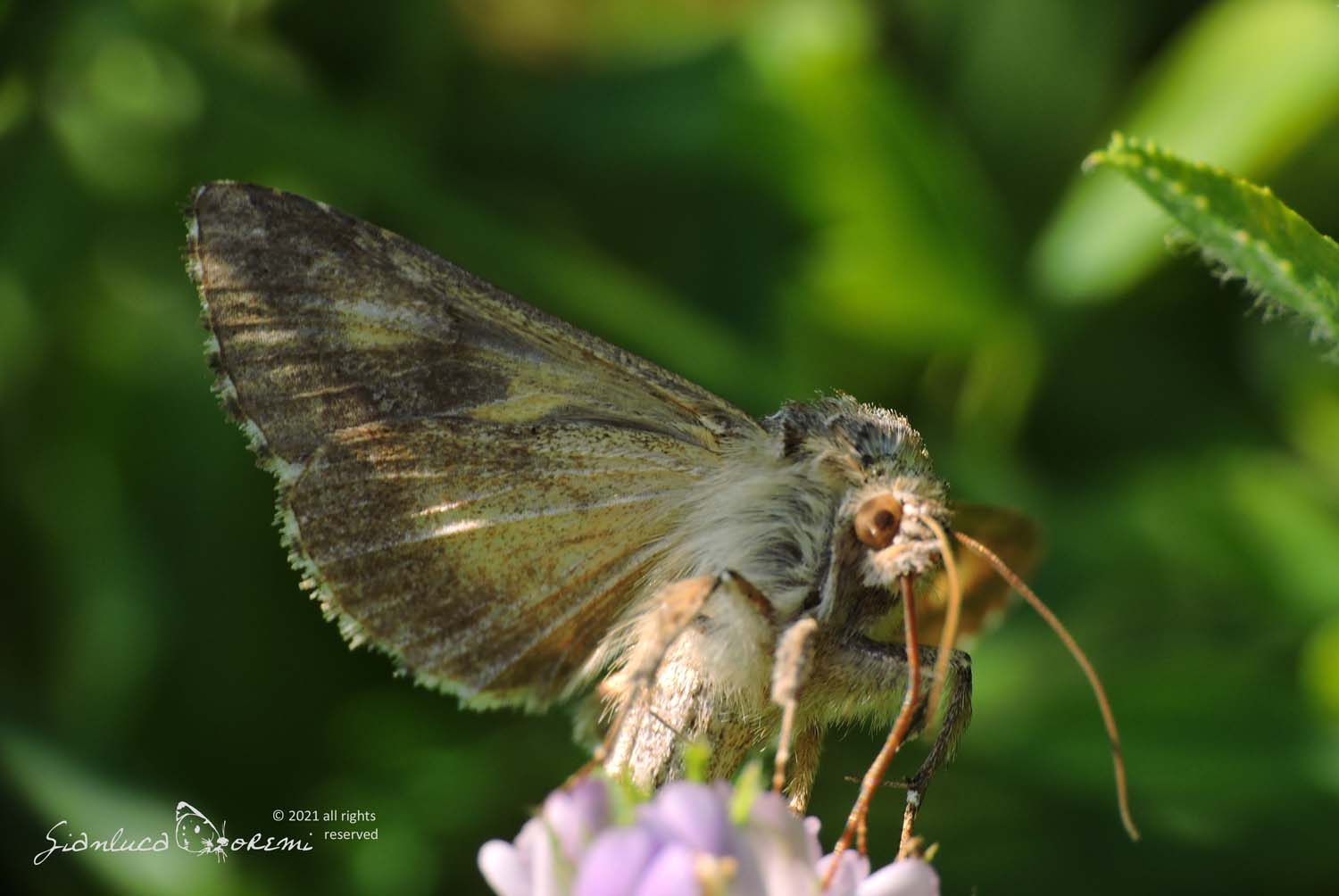
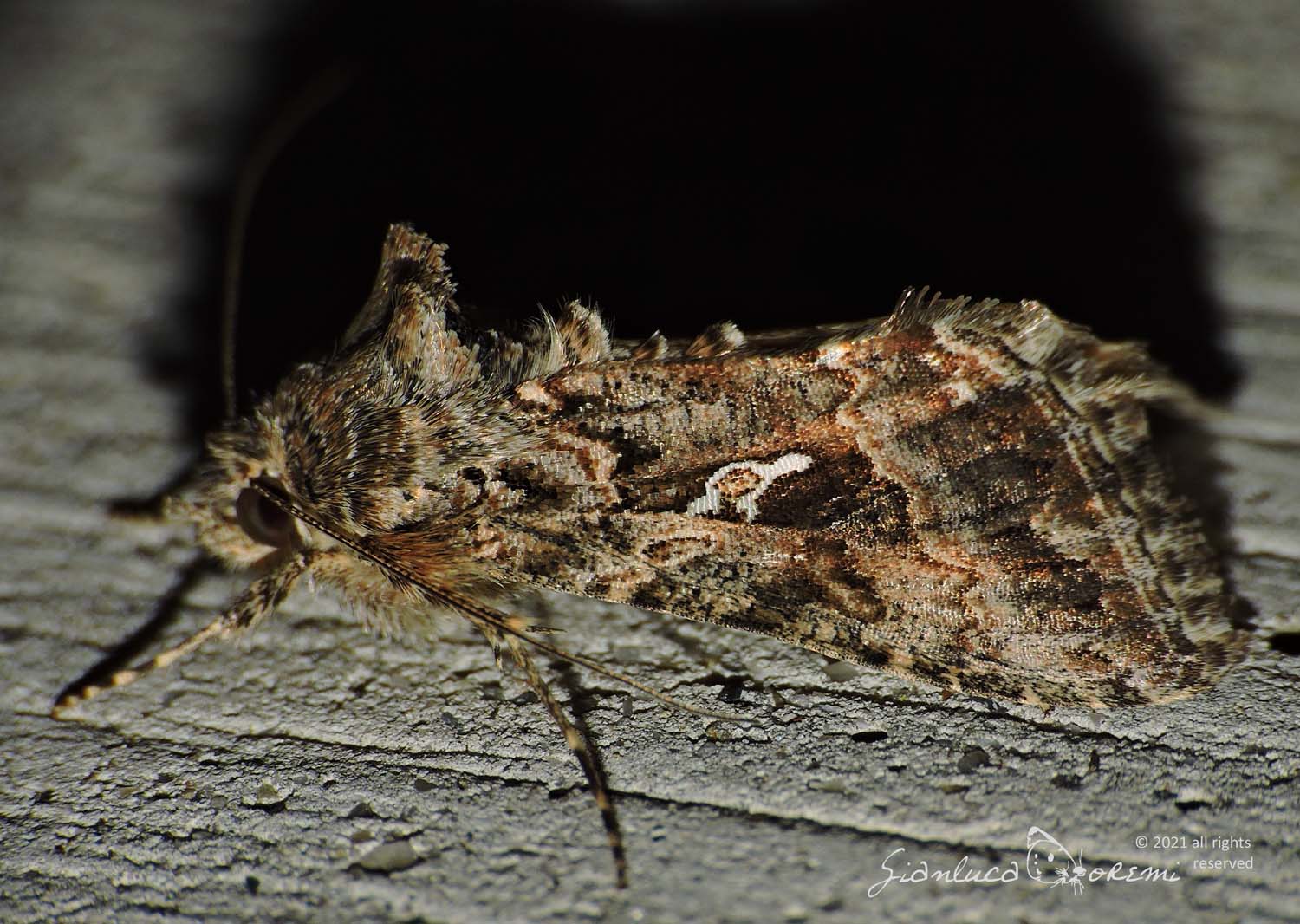

 EN
EN ITA
ITA
Social and publications